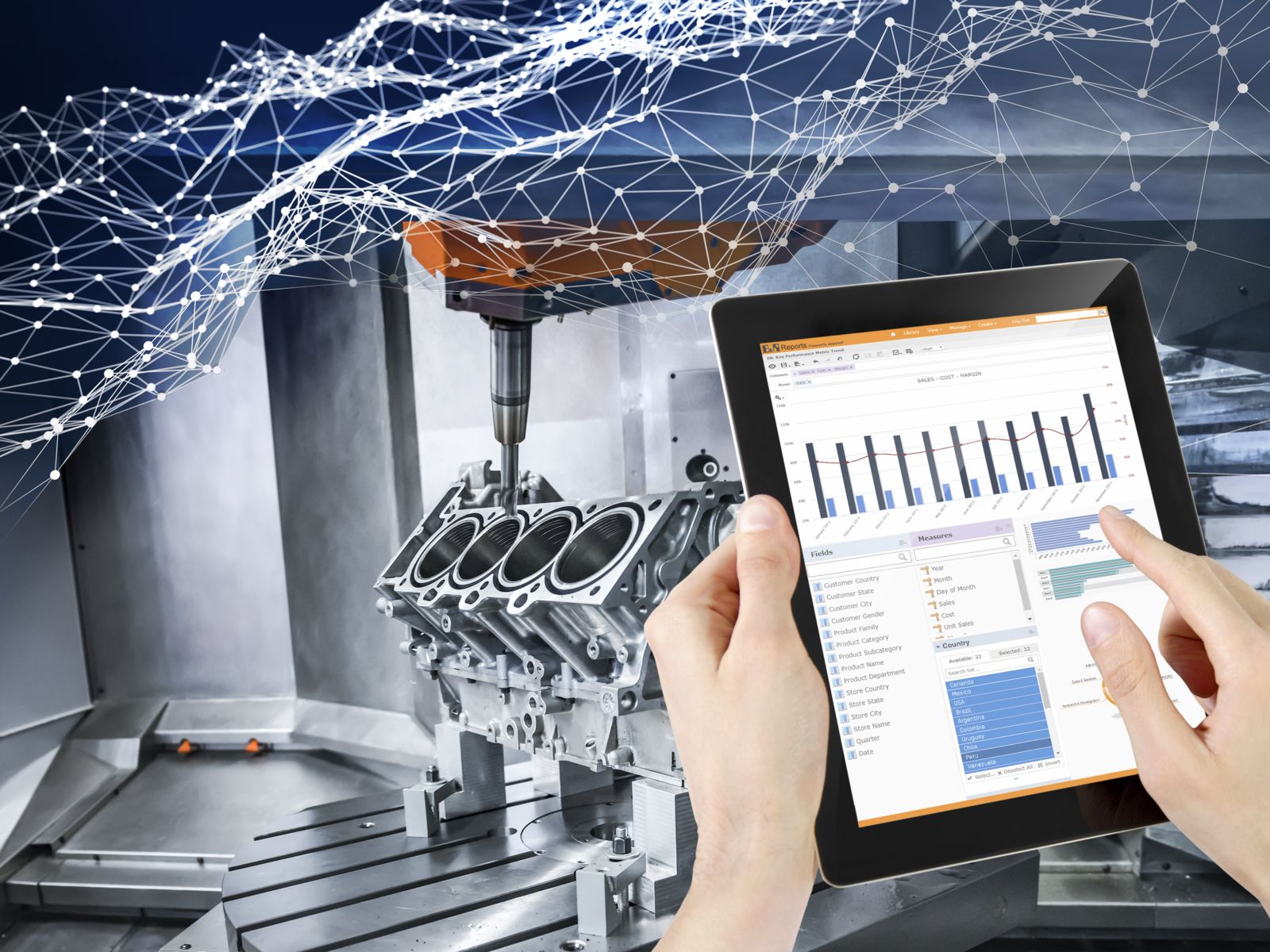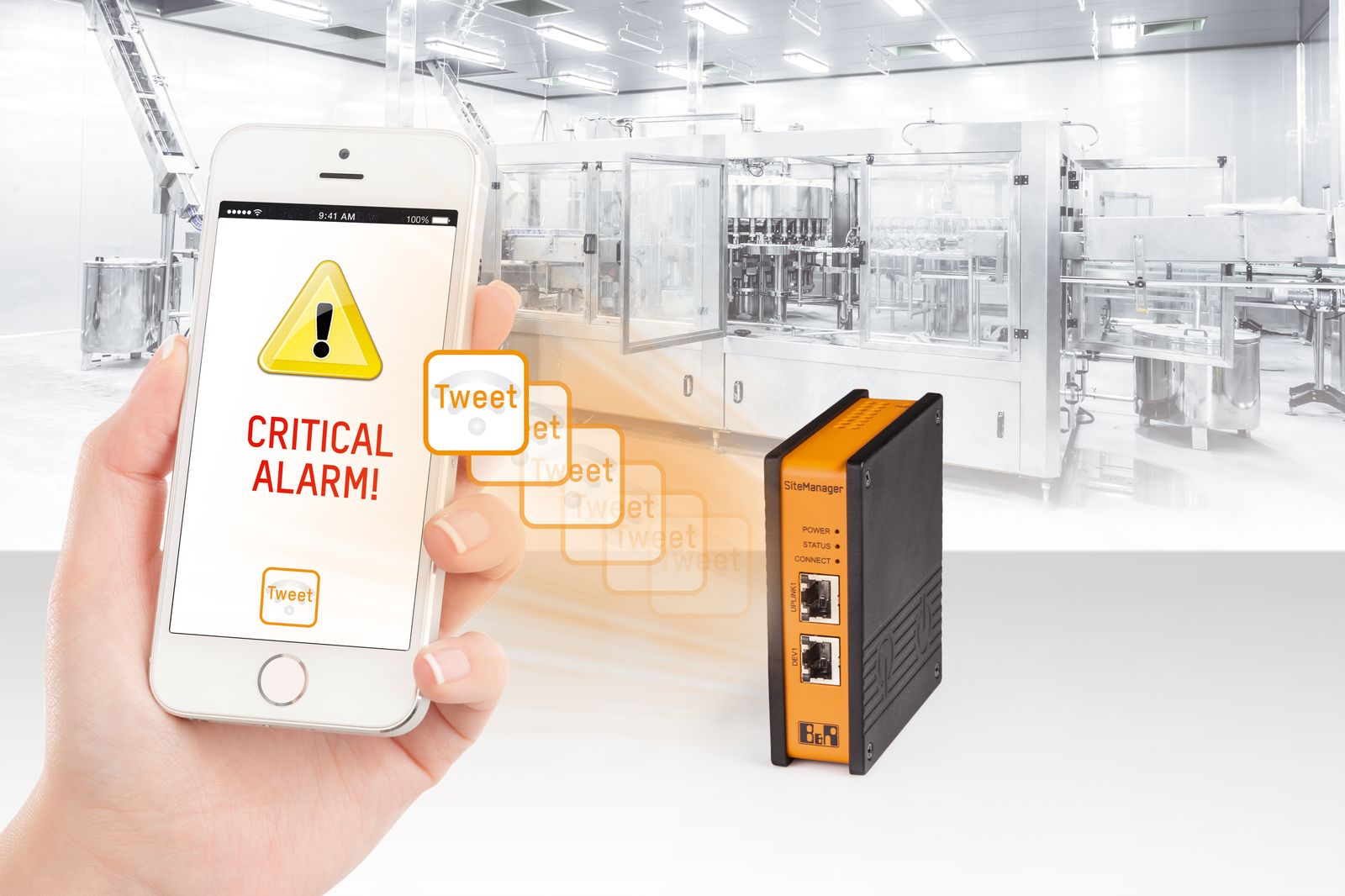To remain competitive in the long term, plant operators are under constant pressure to get more and more out of their equipment. Heralded as a silver bullet in this pursuit is the Industrial Internet of Things. Even in the short term, IIoT capabilities can deliver a substantial boost in efficiency. The IIoT also brings exciting opportunities for OEMs in the form of new business models.

Possibly the most decisive factor in the efficiency of plants and machinery is their availability. Every minute of downtime eats away at an operator's bottom line. "That's why it's so crucial to keep changeover times and unscheduled stoppages to a minimum," explains B&R Marketing Manager Stefan Schönegger. With the intelligent, connected machines that make up the Industrial Internet of Things, it's becoming possible to virtually eliminate unplanned downtime. One of the primary advantages is the ability to implement predictive maintenance strategies based on condition monitoring.
The relentless pursuit of efficiency has other ramifications as well, notes Schönegger: "More and more companies are offering their equipment in the form of integrated lines and processing centers." In some cases, these systems are even built to order for each customer. This kind of flexibility is only possible if the machines involved are able to interact with the ease of plug-and-play. "After all," says Schönegger, "seamless communication and exchange of data are fundamental requirements of both connected machinery and predictive maintenance."
Simply being able to collect, aggregate and analyze the operating data of a machine's electrical, mechanical and hydraulic components directly on site is enough to prevent many unplanned stoppages. "Beyond that, what you really want is a connection to the cloud," adds Schönegger. Cloud connectivity creates new opportunities and opens up new business models by giving OEMs the ability to read data from machines in the field and notify operators of impending problems. "It's a win-win situation," he continues: "The OEM gains an additional source of revenue, and the operator benefits from better machine availability."
Connectivity on demand
It's up to OEMs to make it possible. "They have to provide their customers with tools for collecting and analyzing machine and process data, and they have to equip their machines with the necessary IT infrastructure," explains Schönegger. To do this, they need hardware that is able to collect and share data in sufficient quality. In other words: they need edge devices.

Stefan Schönegger, Marketing Manager at B&R
Addressing a common concern in this area, the IIoT expert assures OEMs: "You don't need a dedicated line or a constant connection to the Internet." All that's needed is a heartbeat sent at regular intervals containing information about the machine's health, such as hours of operation, temperature or speed. It is even possible to configure the edge components in such a way that they only send information when triggered by defined events – such as alarms or operating errors. Here, too, lies potential for new revenue streams, explains Schönegger: "If you notice a certain type of operator error occurring over and over, you can offer the customer targeted training."
IIoT solutions also enable more efficient remote maintenance strategies. Service technicians working for the OEM or their customer can connect with the machine and help on-site operators localize and correct the error. "Of course, whenever you talk about outside access to a machine, the topic of security becomes extremely important," emphasizes Schönegger. That's why B&R's Secure Remote Maintenance solution uses the latest in security technology, including VPNs (Virtual Private Networks) and three-homed firewalls.

Data-driven service
Collecting data is an essential first step toward enjoying the benefits of the IIoT. "On its own, however, the data offers you no added value," notes Schönegger. It takes intelligent software algorithms to transform the raw data into useful information that can help optimize the efficiency of a manufacturing system. The good news is: OEMs don't have to develop these algorithms on their own. B&R provides them conveniently preprogrammed in the form of mapp Technology software components.
With mapp components, a user can set up an energy monitoring or alarm system with just a few clicks of the mouse. Advanced software solutions like condition monitoring provide valuable information about the health of the machine. Vibration analysis offers insight into things like tool wear level, feed rate and cutting speed. The machine operator can use this information directly or receive notification from the OEM when action is required.

New business models
"The relationship between a machine builder and a machine operator can take on whole new dimensions," says Schönegger. It is even conceivable that what is sold is no longer the machine itself, but rather a certain quota of operating hours or an output quantity. In such a case, the operator no longer has to bother with servicing the machine or replacing components. The OEM is able to keep an eye on the machine's status from afar. The operator is notified whenever service is required, but doesn't have to worry about anything – it's all handled by the OEM.
"There is one other important prerequisite for this type of setup to work," adds Schönegger: "The data being used must be of high quality." Even the most advanced monitoring solution is useless if it is based on incorrect or incorrectly evaluated data. B&R solutions offer extremely high sampling rates for digital drive technology, exceptionally fast control response times and advanced preprocessing right at the source of the data: in the I/O modules and edge components. "These are all critical factors in IIoT performance," says Schönegger.
High availability in your product portfolio
The IIoT is a challenge OEMs need to face, even if the technology involved falls outside their traditional expertise. "That's exactly where we're able to step in with our hardware and software solutions," explains Schönegger. OEMs can get their machines IIoT-ready and offer their customers high availability with new business models for next-level service.
Author: Carmen Klingler-Deiseroth, freelance journalist